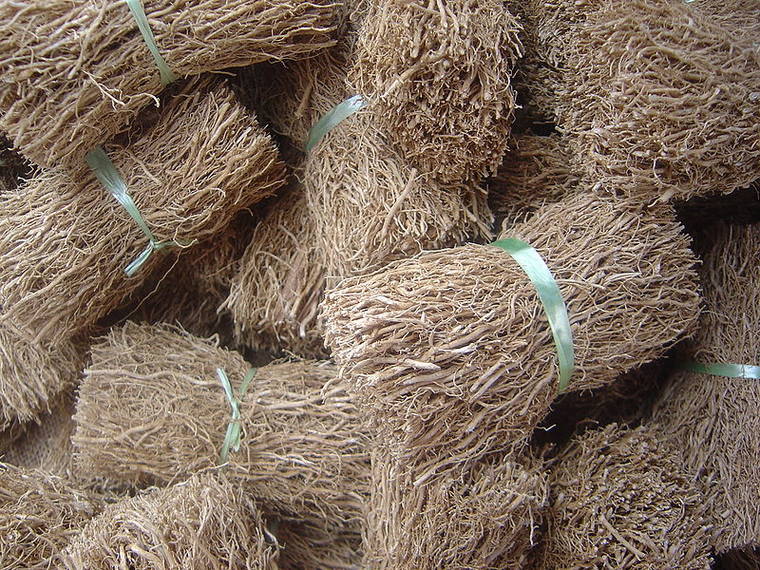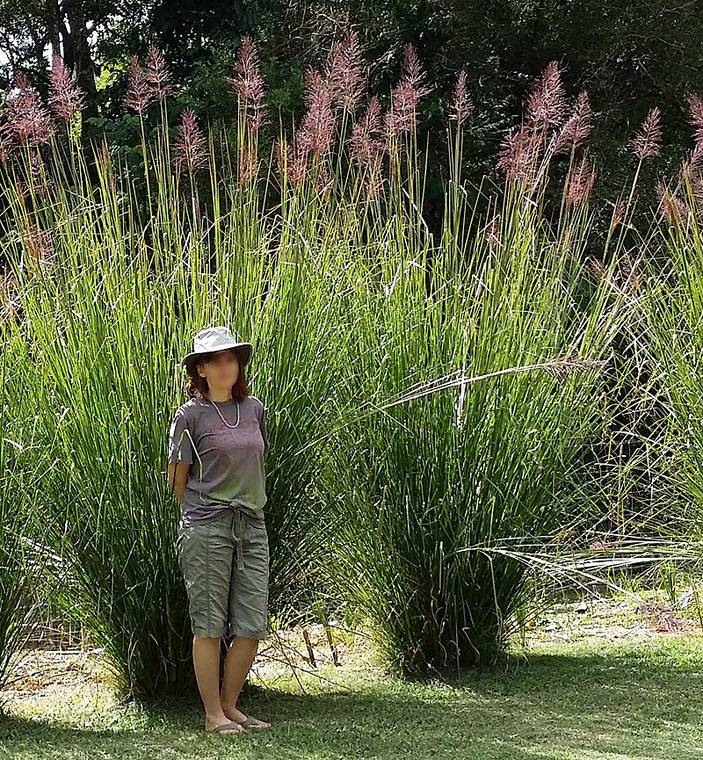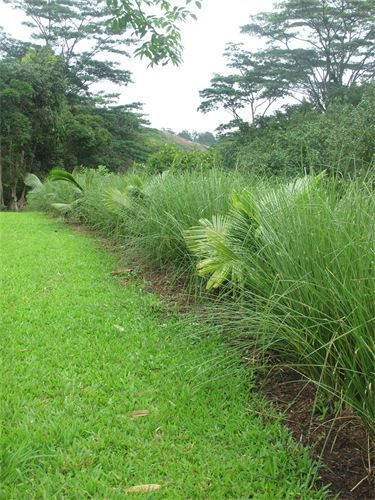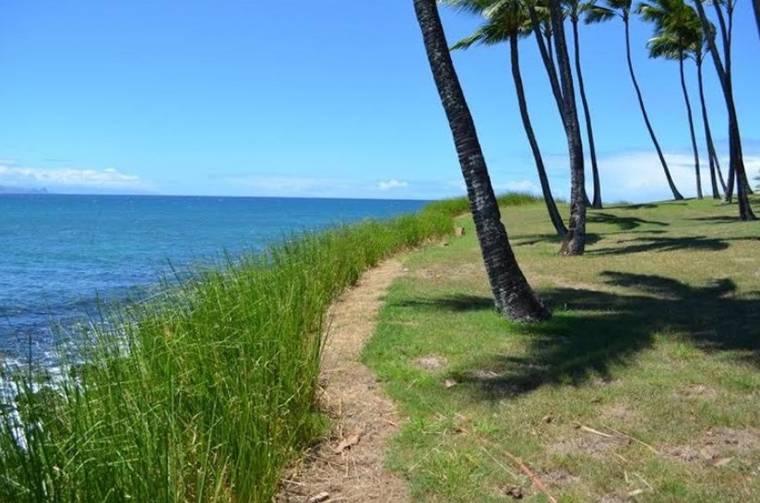KONA — Keeping your little bit of topsoil in place, or just protecting your land from erosion by wind, rain, floods or rising surf is an increasingly daunting challenge here in Hawaii. Along the coast or on steep slopes, choosing to plant vetiver grass can help prevent and mitigate erosion damage.
Vetiver plants have been used for decades in the tropics as a hedge against erosion and landslides. Their hedges make effective barriers that can slow down fast-moving water and trap debris that is moving downhill.
Within a year, vetiver plants will produce strong leaves and stems that can hold soil and even gravel on a slope. The plants will also generate an impressive mass of root material growing deep into the soil. Vetiver’s fibrous roots anchor the soil while holding in moisture and plant nutrients that might otherwise get washed away.
In addition to vetiver’s erosion control properties, it is also an attractive landscape grass for edging and defining borders. It is fast growing and can grow as tall as 8 feet. The leaves are stiff but thin and can be trimmed to a desired height. Trimmings can be used as mulch or biomass for a farm or garden. Mature clumps can grow 18 to 24 inches in diameter, generating slips that can be removed for propagation.
Beginning at about nine months, vetiver will put out lavender flower heads but no seeds. Since it produces neither seeds nor underground runners, vetiver will never become invasive or weedy. Using slips removed from mature clumps for propagation, they should be planted in rows about 4 inches apart. This will result in a dense hedge in about a year. By that time the vetiver plants will have roots that are anchoring the soil 5 feet or more below the surface. Mature plants will produce a tangled “wall” of root mass as deep as 20 feet into the soil.
Native to India, vetiver (Chrysopogon zizanioides) is a perennial bunchgrass in the Poaceae or grass family. In the United States the sterile cultivar commonly grown is named “sunshine.” This cultivar, whose roots have long been used in Louisiana as an insect repellent, was given that name by the USDA in 1989 for Sunshine, Louisiana. The town along the Mississippi River near Baton Rouge was the site of a vetiver farm where Eugene LeBlanc Sr. grew this heritage clone. He had acquired the plant from his grandparents. Sunshine or very similar cultivars are now growing worldwide.
Vetiver is closely related to sorghum and shares aromatic properties with several fragrant grasses including lemongrass and citronella grass. Vetiver’s aromatic quality is in the roots, however. In many parts of the world, the roots are woven into fragrant mats or blinds. The roots can also be steeped into a tea. Steam-distillation of the roots produces an essential oil that has an earthy somewhat smoky aroma similar to patchouli. The oil is used in aromatherapy, for insect repellant and is used for a variety of medicinal purposes as well as an ingredient in perfume.
Vetiver is a very tolerant plant making it an attractive choice for a landscape. It can tolerate a wide variety of climatic conditions including dry deserts and wet marches. It is salt, wind and fire resistant. It can be grown in sand and will penetrate and loosen dense or compacted soils. It has also been grown to successfully remove contaminants from soil. And, it is disease and pest resistant. Vetiver’s versatility is legendary.
Go online to learn more about this very versatile plant. Check out vetiversystems.com for more information on growing vetiver in Hawaii. Mary A. Wilkowski (536-5444) owns Oahu-based Vetiver Systems Hawaii, which engineers sells and installs vetiver. She is an associate director of the International Vetiver Network (TVNI). The Network’s website vetiver.org contains vast amounts of information on vetiver. On the Big Island, vetiver slips are available from vetiverfarmshawail.com.
Diana Duff is a plant adviser, educator and consultant living part time in Kailua-Kona.






